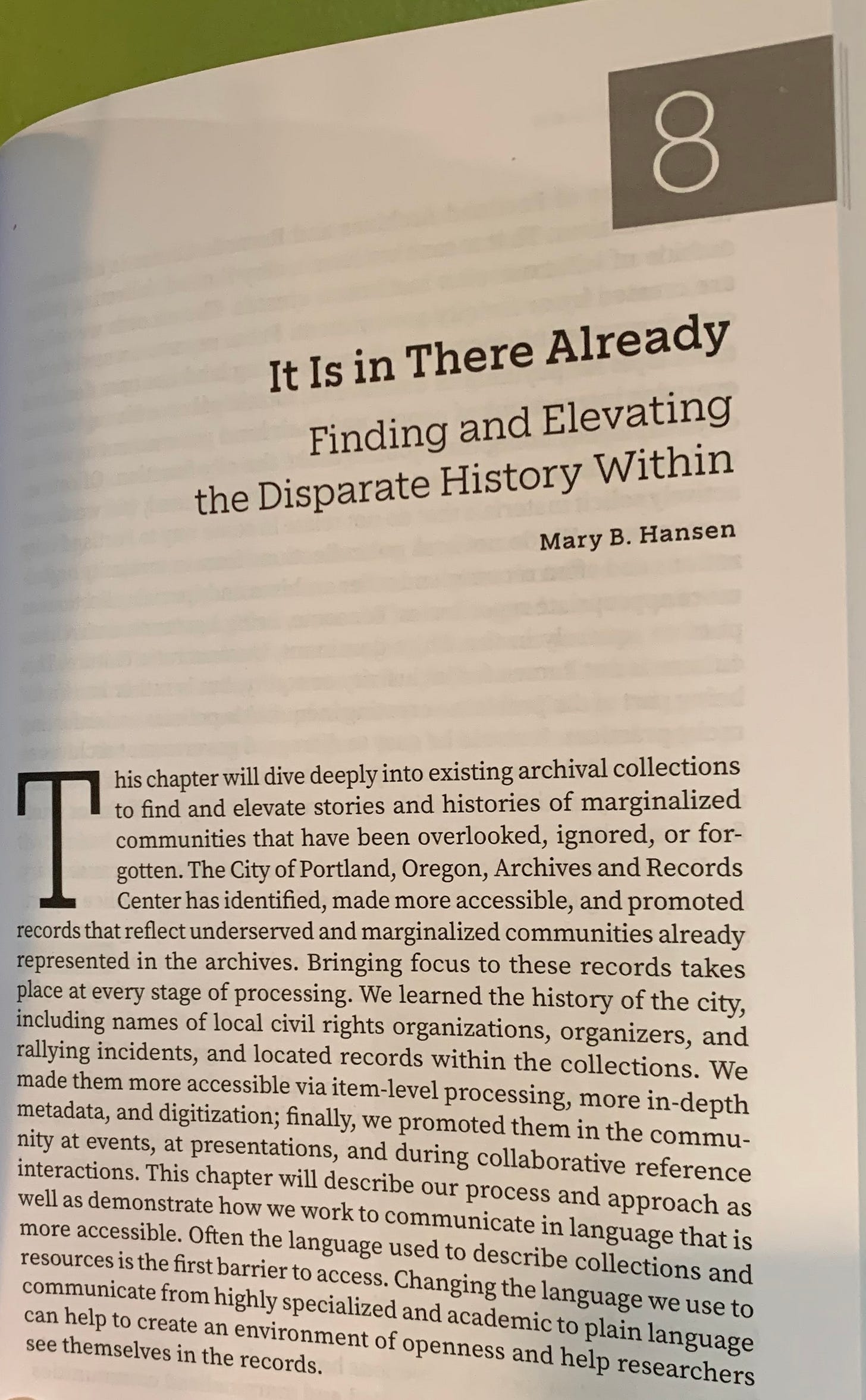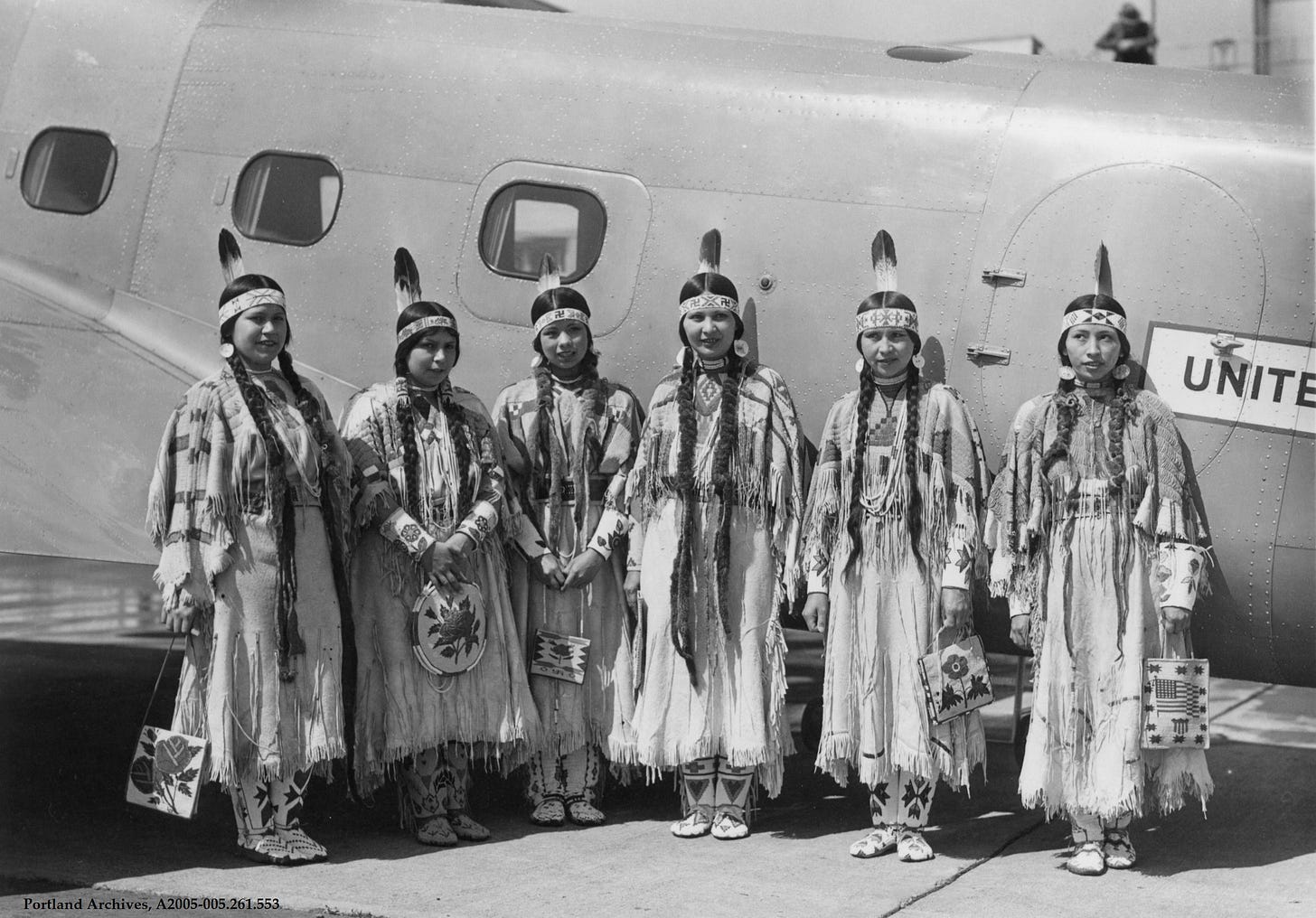In the fall of 2019 I saw a call for contributors for book about representative archives. I few years prior (2017) I was part of a panel at the Society of American Archivists (SAA) annual conference about Documenting Activism in Local Government Archives. Most people on the panel highlighted work they had done collecting community stories about a specific event or how researchers used archival records to learn why and when Civil War monuments were erected. All good uses of archives.
I took a different approach to the topic and focused on the records already in the City’s archival collections. I looked at records created by people interacting with City government from applying for permits to testifying at City Council. I hope the SAA audience got something out of it, but more importantly I think preparing the talk helped me identify my motivation and passion in working with archival materials. My joy is uplifting stories and histories for people who have been ignored, forgotten or erased. Those are the stories I am interested in helping people find. I believe that history reminds us that life is ever changing. Things were not always this way, which means things can change. We can have agency in our collective futures.

Back to the book on representative archives. I took the ideas from my presentation on the 2017 panel and wrote a chapter highlighting and elevating those stories even more. So finally Building Representative Community Archives: Inclusive Strategies in Practice is now out, published by the American Library Association (ALA) Neal Schuman. I am very proud of the chapter I wrote and the stories I get to highlight and share with a broader audience. 1

Many urban renewal projects across the country disproportionally affected communities of color and other underrepresented communities. Urban renewal has become a term for modern researchers to identify records that show the effects on these communities. Instead of searching the database for racial disparities or African Americans, we can guide researchers to search for urban renewal and blight to find records. We, as archivists, can help researchers find and access information about racial disparities and how communities responded by helping them navigate to records they might not have found on their own because archives are not arranged by subject.
Two examples that help tell the stories of African Americans in Portland are the Albina Neighborhood Improvement Project and the Emanuel Displaced Persons Association. Both examples highlight community responses to urban renewal through how they interacted with the city and the Portland Development Commission. Both counter the dominant narrative that these communities had no agency and that things were done to them instead of showing the communities’ active engagement and protest.
(Chapter 8 It’s in there already - finding and elevating the disparate history within p. 182)
One of the critiques shared with me on an early draft was that it was too informal for a book chapter. After having some feelings, I re-grounded in the fact that is who I am. My goal and joy in life is helping people find and access information that helps them change their own understanding of things and the world. I want to bring people in because there is room for everyone.
This is the description of my chapter from the preface. If you are interested in descriptions of all the chapters click here to download a sample PDF.
In chapter 8, Mary B. Hansen explains that, although there are always exceptions, the Portland (Oregon) City Archives does not actively solicit material that does not relate in some way to the municipal government. Although white culture dominated much of Portland’s bureaucratic history, local government tends to be more accessible to a broad range of members of the community. Whether testifying at city council about homelessness or writing remonstrations to the Bureau of Transportation regarding road improvements, people have their daily lives affected by city government, and those interactions are part of its record. Archivists are in a position to locate and elevate stories within the bureaucratic records and make them accessible to the communities they document. This chapter focuses on how institutional archives identify and promote records that reflect traditionally underrepresented communities. Hansen explains the importance for a municipal archivist of learning the history of the city, including names of local civil rights organizations, organizers, and rallying incidents. She explains how to use this knowledge to reassess records, making them more accessible via item-level processing, the creation of in-depth metadata, and digitization. Finally, she explains how to create events, presentations, and even reference interviews that promote these records as witnesses to a range of complicated and diverse histories. Hansen’s chapter uses examples from the Portland City Archives to demonstrate how reassessment can foster new engagement with existing archives and help all members of the community see their stories reflected in the history of the city.





This work is right where my heart is - telling forgotten stories. But you have a professional eye on how to do it. Especially love the photo of the indigenous women.